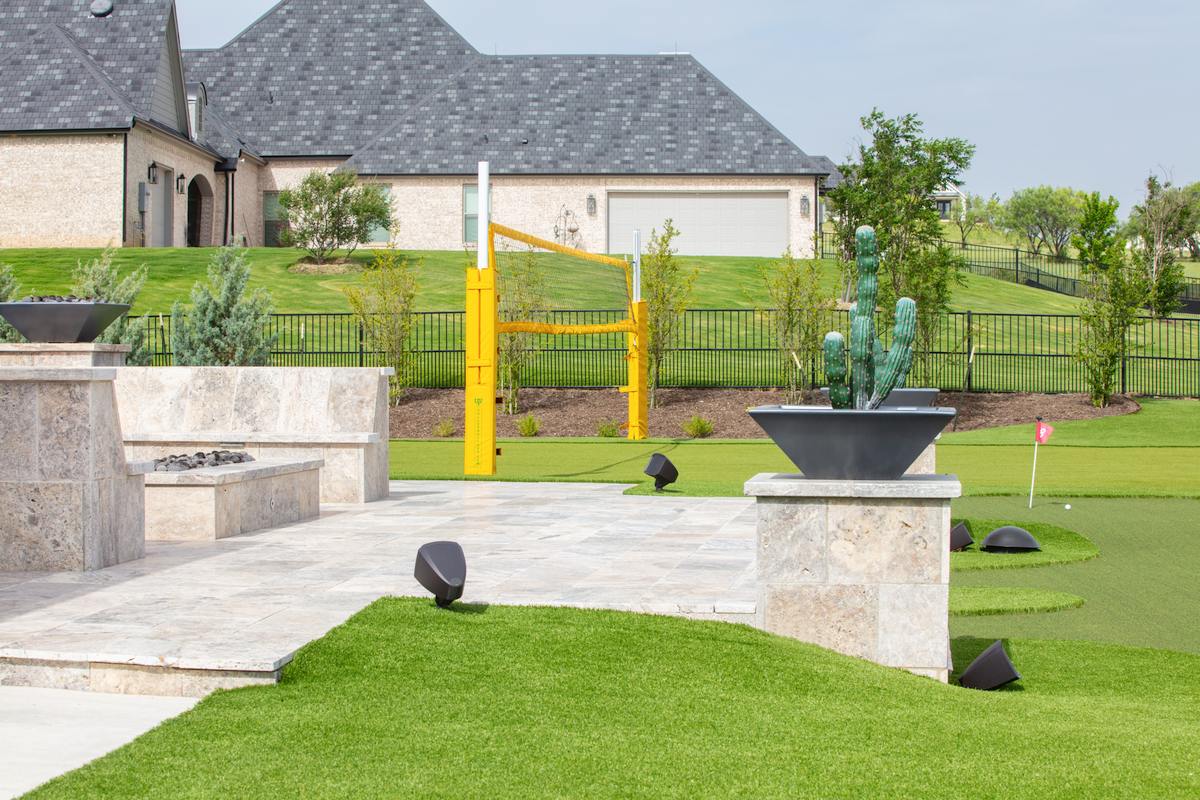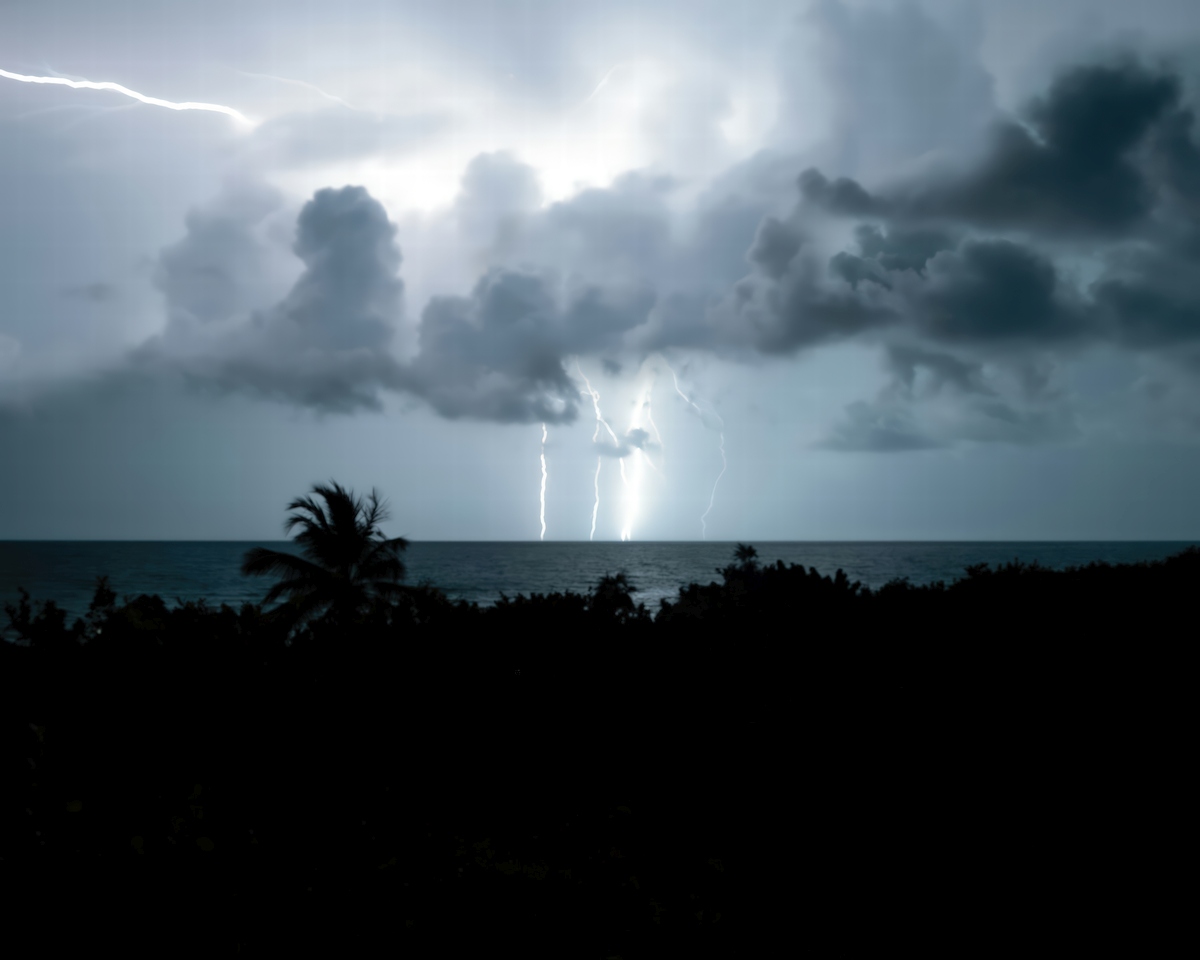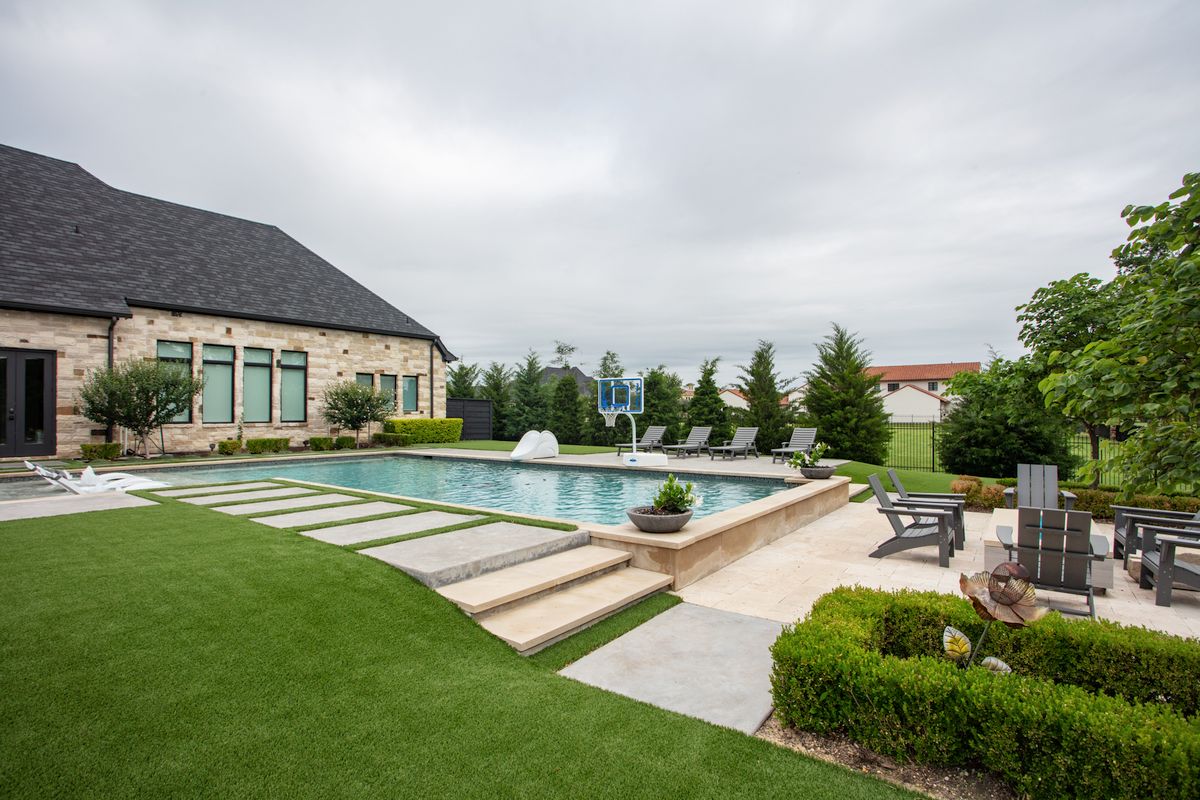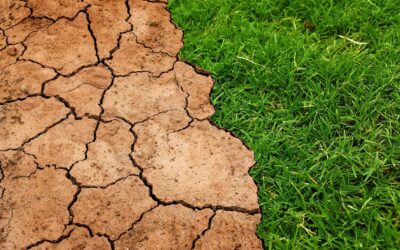Do you need a new lawn in San Antonio, Corpus Christi or Laredo?
Whether you intend to grow seed or sod, you’ll need to choose between hundreds of different types of lawn grasses available in Texas. How do you select the best grass for South Texas?
Only about four or five main grasses thrive and are popular for lawns because of the unique and varied climate in the South Texas region.
Let’s look at the best grass for South Texas—and consider one grass alternative that has become more popular in recent years.
Best Grass for South Texas
The best grass for South Texas depends on the intended purpose, location, and local conditions of your space. Generally, however, St. Augustine, Zoysia, Bermuda, and Buffalo grass fare the best.
These grass types vary in properties but are all naturally suited to the humid subtropical climate of much of South Texas, with its summer heat, mild winters, storms, and occasional drought periods. Coastal areas of South Texas get more rain and may be better suited to more salt-tolerant types of grass.
Each of the main grass types is covered in detail below. First, however, let’s take a quick look at a grass alternative for homeowners not totally “married” to the idea of a real grass lawn…
The Best Grass for South Texas Might Not Be Real Grass!
The San Antonio Alamodome, like the Darrell K Royal–Texas Memorial Stadium and NRG Stadium in Houston, have artificial grass fields—partly because of the difficulties of keeping real grass healthy and the expense of maintaining it.
Many NFL and college football stadiums have switched to artificial turf and homeowners are following suit.
In recent years, with the increasing availability of elite-level synthetic turf for homes as well as businesses, property owners are discovering the many benefits of installing turf in their back and front yard spaces. We’ve helped thousands of Texan homeowners make the switch in the past two decades, like this one:
There’s more about synthetic grass later in this post but, first, let’s find out more about the best real grass choices in South Texas…
GET A FREE ARTIFICIAL GRASS ESTIMATE
Looking for an alternative to grass? Get a free estimate from the experienced team at Artificial Grass Pros in San Antonio. Contact us here.
What Factors Affect the Best Grass Choice in South Texas?
Before deciding on the best grass for your South Texas home, consider the following factors:
Purpose of the yard space:
Not every yard space with grass is used for a pristine lawn. Lawns take on many shapes, sizes, and uses. Homeowners may convert their spaces into playgrounds, picnic areas, backyard swimming pool areas, patios, entertainment areas, firepits or another creative backyard idea.
The intended use of the space will affect the type of grass you need. For instance, grass used for backyard sports will need to be able to handle heavy foot traffic.
Local climate
The climate in South Texas varies from area to area:
- Coastal areas are generally warm and humid but get more rain than inland, with the occasional tropical storm bringing torrential rains and flooding.
- Inland areas have mild winters and are generally semi-arid.
- The Rio Grande Valley is generally wetter than other inland areas.
- The very south near the Mexican border is semi-arid.
You’ll need a grass to suit the local climate in your area.
Other local yard conditions:
How much sunlight and shade does your yard receive? What are the soil conditions in your backyard?
These factors impact the type of grass you need. All grass needs sunlight and water to photosynthesize and grow healthily—but how much of each resource is required varies from type to type. Yards with tall, dense foliage or buildings that block sunlight require shade-tolerant grass, for instance.
Maintenance requirements:
Do you want a lawn that needs little work? Or do you cherish weekends out in the yard, mowing and tending your grass?
How much grass maintenance you’re prepared to do will affect your choice of best grass—some South Texas grasses simply require more care, more resources, and a higher budget to look after.
Generally, the better adapted the grass is to the climate and other local conditions, the less maintenance it will require.
Drought tolerance:
Weeks of limited or no rainfall can harm the health of most grass types if they are not properly irrigated.
The National Drought Mitigation Center (NDMC) considers San Antonio to be in extreme drought. Other parts of South Texas are also experiencing moderate or severe drought.
This affects your choice of grass because, while all grasses mentioned in this post may be considered somewhat drought tolerant, some handle long periods of dryness better than others that need more irrigation.
Storm/flood tolerance:
Hurricanes, tornados, and tropical storms along the Gulf Coast can affect these areas of South Texas. Though these events are less frequent inland, most of the region is no stranger to occasional heavy rainfall.
The average annual rainfall in Texas is 27.25 inches. In recent years, San Antonio has received below-average rainfall but its usual average is just below 33 inches, meaning that it usually gets its fair share of precipitation.
Coastal/inland location
Most of Texas doesn’t need to worry about the effects of a coastal location on grass growth but South and Southeast Texas are different.
Coastal locations must contend not only with the storms but also a higher salt content in the air and soils, which can affect grass choice. These areas tend to be warm all year with higher rainfall and humidity.
The Best Grass Options for South Texas: A Closer Look
The four best grass types for South Texas lawns are warm-season grasses like St, Augustine, Zoysia, Bermuda, and Buffalo grass. Let’s take a closer look at each one.
St. Augustine grass
|
BEST FOR: |
Shade or sun, sandy or salty soils, light foot traffic, and homeowners prepared to maintain their lawn. |
|
AVOID IF: |
You’re looking for low-maintenance grass or have boisterous pets or children using the space. |
St. Augustine grass thrives in the southern states because of its love of heat, humidity, and moderate sunshine. You will see it in all areas of South Texas and it is quite drought-tolerant.
This grass forms a dense covering for lawns and will usually handle poor soils and partial shade moderately well—especially shade-tolerant varieties like Palmetto, Raleigh, and Texas Native. Palmetto is the top-selling patented turfgrass in the world.
Bear in mind that St. Augustine grass sod should be planted in late spring or early summer. Seeds are not commercially available. This grass requires fertilizing and irrigation during the summer months, as well as weekly mowing. Chinch bugs are a potential pest problem that affects St. Augustine and this grass may be damaged by excessive foot traffic too.
Zoysia grass
|
BEST FOR: |
Low-maintenance lawns with moderate traffic and limited sunlight or heavily shaded areas. |
|
AVOID IF: |
You’re looking for a cheaper grass type or need grass that recovers quickly after being damaged. |
Zoysia has the look, the feel, and the adaptability to suit home and business owners in South Texas. You’ll even find it on some of the best golf courses in San Antonio. In fact, the Golf Club of Texas is the first course in the country to be completely covered in Zoysia grass!
This dense-growing lawn grass provides a lush green carpet—but is also very hardy, with good drought tolerance. Some strains like Palisades and Zeon are among the best grass options for shade in Texas.
Zoysia grows more slowly than St Augustine and is highly pest and disease-resistant. This means less maintenance, with less frequent mowing. It also requires little fertilizer.
Unlike St. Augustine grass, Zoysia is available in seed form but can be relatively challenging to establish, sometimes requiring up to three seasons to flourish.
If Zoysia grass is damaged by high foot traffic, it takes time to recover so if you’ve got pets and sporty children, take precautions with your lawn.
Bermuda grass
|
BEST FOR: |
High-traffic lawns in full sunshine—ideal if you have pets or children or want a backyard sports area. |
|
AVOID IF: |
You have heavily shaded areas or don’t like maintenance (it needs a lot of mowing). |
Bermuda grass is another of the best grasses for the entire south of the country, including South Texas—provided your lawn area receives plenty of sunshine and you don’t mind doing some regular maintenance.
Bermuda grass is one of the most popular backyard grasses but it is also widely used on professional and amateur sports fields—including in many NFL stadiums (those that haven’t switched to artificial grass).
Tifway is one of the most common types of Bermuda grass used on sports fields in South Texas because of its strength, durability, and ability to bounce back after compression or damage.
In many ways, the lush look and feel of Bermuda grass typify the perfect American lawn but it is also very hardy and capable of handling heavy foot traffic—an advantage over the other types of grass mentioned here.
Bermuda grass also handles drought moderately well with a little attention to irrigation and it is resistant to pests, disease, and weeds.
Bermuda grass is less suitable for lawns when homeowners are not keen on maintenance or areas of the lawn are heavily shaded. Regular watering, fertilizing, and mowing are required and if your yard receives less than 5-6 hours of sunlight per day, select another grass.
Buffalo grass
|
BEST FOR: |
Low-maintenance lawns and homeowners who want an eco-friendly alternative. |
|
AVOID IF: |
Your area receives heavy foot traffic, above-average rainfall or a lot of shade. |
Buffalo grass has one major advantage over the other grasses included here—it’s native to Texas.
This means that it is naturally adapted to the hot and humid conditions of South Texas and is a more eco-friendly option than the non-native warm-season grasses, which require more resources (and work) to keep them healthy.
Buffalo grass is drought-resistant, disease-resistant, and slow-growing, requiring little mowing, fertilizing or irrigation. It is more suited to areas with lower rainfall (away from the coast) as it may struggle with heavy rainfall—though salty soils are generally fine.
Homeowners who choose Buffalo grass should be patient as establishing a full, mature lawn may take a while. It’s best to plant this fine-bladed grass in late spring or early summer and keep it longer than other varieties.
Seed Or Sod for South Texas?
Your choice of grass seed or sod will come down to several considerations:
- What are the local climate, soil, and shade conditions in your yard?
- How patient are you to get your new lawn up and running?
- How much work are you prepared to put into establishing a new lawn?
- What’s your budget?
- What’s available in your local area?
There are plenty of grass seed and sod suppliers in South Texas who can help you establish your new lawn.
Of the best grass types for South Texas mentioned above, all come in sod form but only Bermuda, Zoysia, and Buffalo grass are available in seed form.
Want a Grass Alternative for Your South Texas Lawn?
If you’re looking for a true low-maintenance grass type for your South Texas lawn, nothing can compete with the artificial variety.
There are pros and cons of artificial grass but one of its undoubted attractions is the lack of maintenance, resources, and costs associated with it.
If you install a high-quality artificial grass lawn properly, it should last 15-20 years and save money compared with real grass after about year five. Synthetic turf looks just like the real thing and requires no cutting, fertilizers, pesticides, aeration, weedkillers or any of the other care and attention required by real grass.
With a professional installation, an artificial lawn will drain well and be less susceptible to flooding than real grass planted in clay-based soils.
As well as freeing up time, energy, money, and resources for homeowners, artificial grass is not affected by drought, shade, strong sun or chlorine and, if you have pets, even the smell of dog urine can be prevented with a few adjustments.
Artificial grass is also highly adaptable and well-suited to surfaces intended for kids’ play, dog runs, swimming pool areas or even backyard putting greens.
The best artificial grass types can be used alongside other grass alternatives in South Texas, including hardscaping materials like gravel, crushed rock or pavers and organic options, such as mulch and native Texan plants.
FAQs
Considering Switching to Artificial Grass?
If you’re considering different backyard landscaping ideas for your Austin home, discuss your options with an artificial grass professional.


























